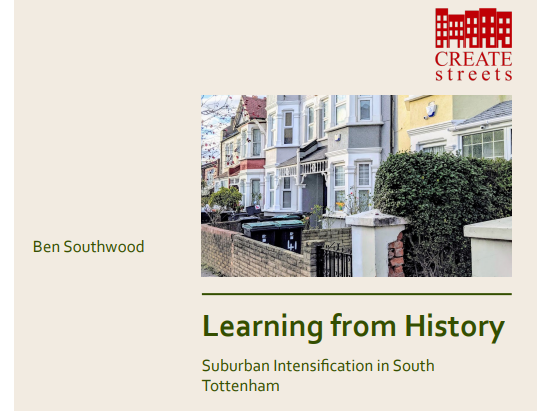Create Streets today publishes ‘Learning from History’ by our Head of Research, Ben Southwood, with a foreword by Rory Stewart.
It sets out an important case study from South Tottenham showing how one neighbourhood has seen significant suburban intensification, driven by community demand and enabled by creative local government. Victorian terraced houses have been allowed to add up to 1.5 storeys (a full storey and a roof storey), subject to a strict design code ensuring that the extensions harmonise with the design of the existing building.
This approach was developed as a solution to serious local overcrowding through the work of ward councillor Joe Goldberg, and community leaders Modche Grosskopf and Shmuel Davidson. The design code was carefully prepared by a team at Haringey Council, led by urban design officer Richard Truscott and supported by council leader Claire Kober.
This approach has been locally popular has been used we estimate 200 times within a small areas and has reduced over-crowding. There are also potential wider lessons
- Street-by-street intensification can be a valuable way to deliver extra floor space needed for growing families in high-demand areas;
- Local consent is crucial for a successful and lasting local housing settlement;
- Visual form-based codes are normally far better than vague statements of policy such as ‘appropriate’ and ‘contextual’.
As Rory Stewart comments in his foreword:
“Britain needs more homes in the right places. But we also need to preserve the beauty that we have inherited in our landscape, our skylines and our buildings. Faced with this dilemma, we oscillate between extremes— concreting the countryside and forcing ‘hyper-dense’ developments into the historic fabric of our cities. But South Tottenham suggests there is another way, that it is possible still to build more gentle density in places, where housing is suitable, needed and welcome.
In South Tottenham, vital space for families has been added not by demolishing our urban inheritance, but by adding to it. Victorian houses have been extended upwards so deftly that the casual observer would not know that the extensions were new. This is exactly the sort of thing the Victorians would themselves have done. In fact, those leading the scheme suggested that they were inspired by exactly such Victorian examples.”
View the full report here.


